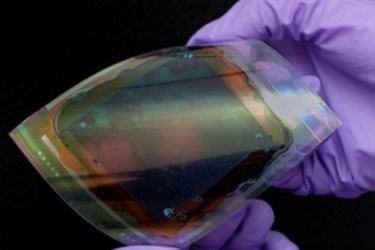Can You Inkjet Print An X-Ray Imager?
By Chuck Seegert, Ph.D.

Instead of manufacturing microelectronics using sophisticated methods, printing circuits with an inkjet-like device is now possible. To demonstrate the power of this method, a portable X-ray unit and other devices have been fabricated.
Creating circuitry in silicon is a complex and expensive process. Wafers are coated with chemicals and subjected to intricate processing methods that eventually lead to a computer chip. The sensitivity of the processes leads to losses due to poor quality if they are not maintained within a narrow range. Additionally, developing a design and manufacturing process for a new silicon chip can be cost prohibitive for the fabrication of some devices.
Now, a low-cost process that can be easily tailored to custom applications has been developed, according to a recent press release from the American Vacuum Society (AVS). The technology allows circuits to be printed on multiple materials and works similarly to an inkjet printer. Instead of ink, metallic materials are dissolved in a liquid solution, which can be printed in a variety of configurations. Recently, to demonstrate the potential of the process, researchers from the Palo Alto Research Center fabricated a portable X-ray imager.
"It's a demonstration of how far this technology can go," said Tina Ng of the Palo Alto Research Center, in the press release. "We're going for more high-volume, simple but useful systems."
Other interesting applications of the technology are focused on the printing of actuators made from organic materials. The actuators contract when stimulated and could potentially be used for artificial muscles, according to the press release.
In addition, this technology could enable printing circuitry on clothing or even skin to provide monitoring, according to the press release. The technology was presented by the Palo Alto Research Center team at the AVS 61st International Symposium and Exhibition at the Baltimore Convention Center.
Other interesting printing technologies have been developing as the medical device space finds more and more uses for additive manufacturing. Recently, seaweed was used to print a cell-compatible material with bioactive properties, according to an article on Med Device Online.
Image: Inkjet printed shift register circuit
